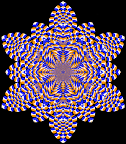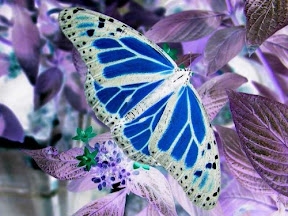Follow up, Earlier this week I had The 2nd annual "Best Visual Illusion of the Year" contest winner. Many of you wanted to know who won the first contest. Well I have been in touch with the winner and he gave me permission to show this illusion here.
The winners of 1st annual "Best Visual Illusion of the Year" contest are Arthur Shapiro and Justin Charles, Department of Psychology, Bucknell University, USA
The below optical illusion presents the illusion of motion. This is accomplished by combining building blocks. In the examples below the blocks that are connected together are in the shape of diamonds, squares or rectangles. Each block is constant and does not change shape. In some presentations the center color is modulated but the edges stay constant. In another the center color stays constant but the edges change colors. Read more about this here.
Here is a quote from the explanation that clarifies some of the below illusions.
"We present four ways of combining the elemental conditions : House of Cards (center modulation), Lucy in the Sky (center modulation, with changes in relative phase of modulation across individual elements), Caterpillar (edge modulation in color, showing that the effect is determined by the luminance of the edges), and the Tilt illusion (center modulation, with ramped edges)."The bottom line is that all blocks in the chain of illusions are a constant size and shape. The perceived motion of the images is just an optical illusion. You can view many more examples and explanations by going to the author's site.
Submissions for the 2007 contest are now welcome. Submit your ideas now and take home this prestigious award!
About the contest
"The contest is a celebration of the ingenuity and creativity of the world’s premier visual illusion research community. Visual illusions are those perceptual experiences that do not match the physical reality. Our perception of the outside world is generated indirectly by brain mechanisms, and so all visual perception is illusory to some extent. The study of visual illusions is therefore of critical importance to the understanding of the basic mechanisms of sensory perception, as well as to cure many diseases of the visual system. The visual illusion community includes visual scientists, ophthalmologists, neurologists, and visual artists that use a variety of methods to help discover the neural underpinnings of visual illusory perception."









0 comments:
Post a Comment | Random Illusion